Before heading off to Cyprus, I was delighted to read through the itinerary put together for us and to see hiking, something I have fallen in love with since I turned thirty.
Promising views across the coastline, this walk certainly lived up to the images I saw on Google, I’m just gutted my drone battery died, as I can imagine the shots I would have got would have been incredible.
Starting Point

There was an area to park at the base of the trail, while there was also a cafe and a public toilet, which was certainly a relief to find. I didn’t spot any other toilets along the way, so make the most of it before heading up.
Behind the toilets were also some stunning views of the seafront which I recommend quickly visiting in order to get some snaps. Seeing how turquoise the water was, I wish we had time for a quick dip, but there was adventuring to do.
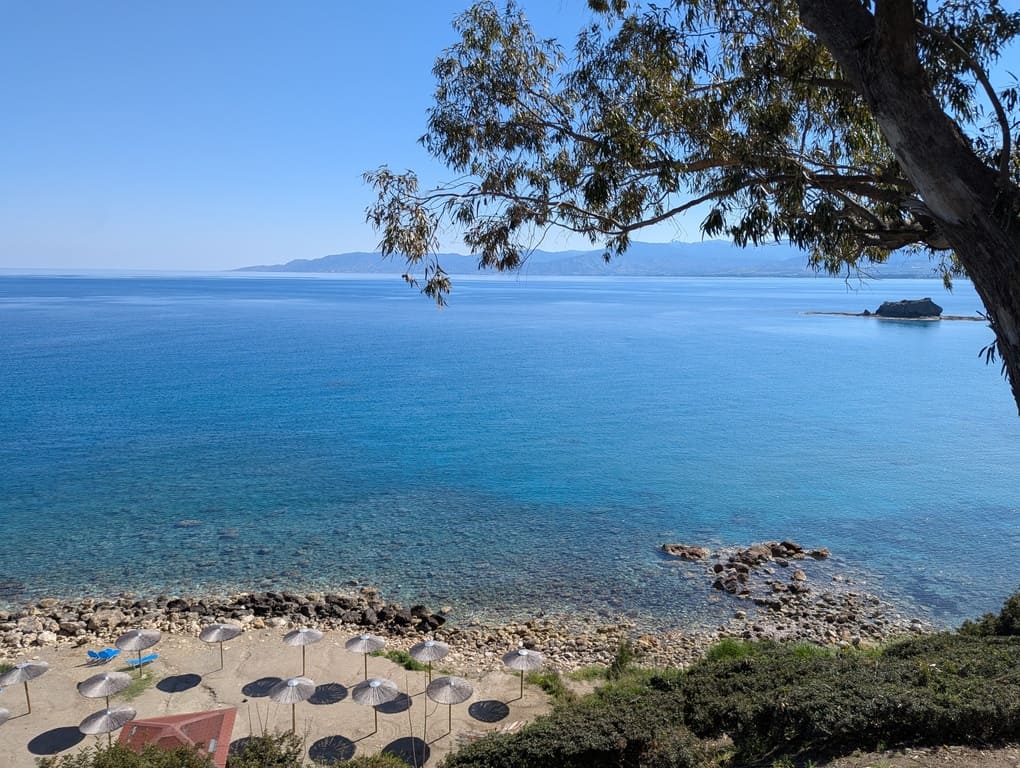
The restaurant and the area is called The Baths of Aphrodite and is recognised as the first point on your journey. According to legend, this is the area where Aphrodite would bathe.
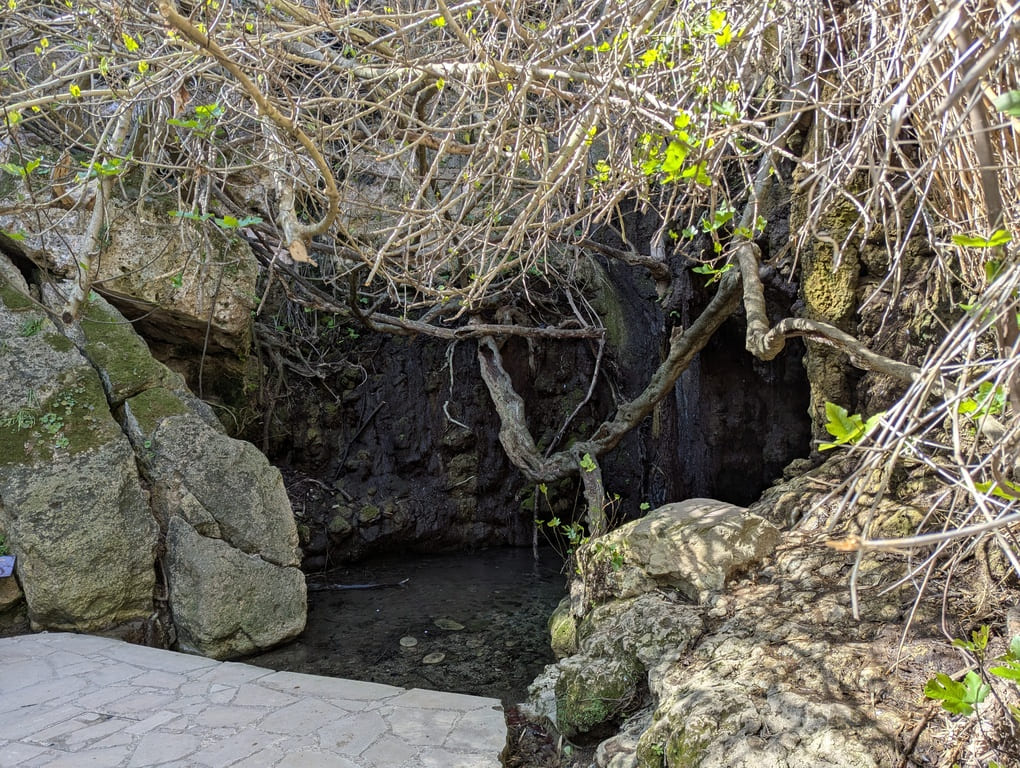
Just before you enter through the gates, you’ll see a map to the left hand side, which will outline the route, but you can also use an app like Komoot. We had an amazing guide and there are a number of hiking guides in this area, allowing you to learn about the history, culture and interesting facts along the walk. They’ll also prevent you getting lost, something I have a bad habit of doing.
You want to do the route anti-clockwise, as this means you get the steep uphill part over and done with, as the walk down on the other side isn’t too steep at all, meaning you’ve got the intense part done.
The Oak Tree
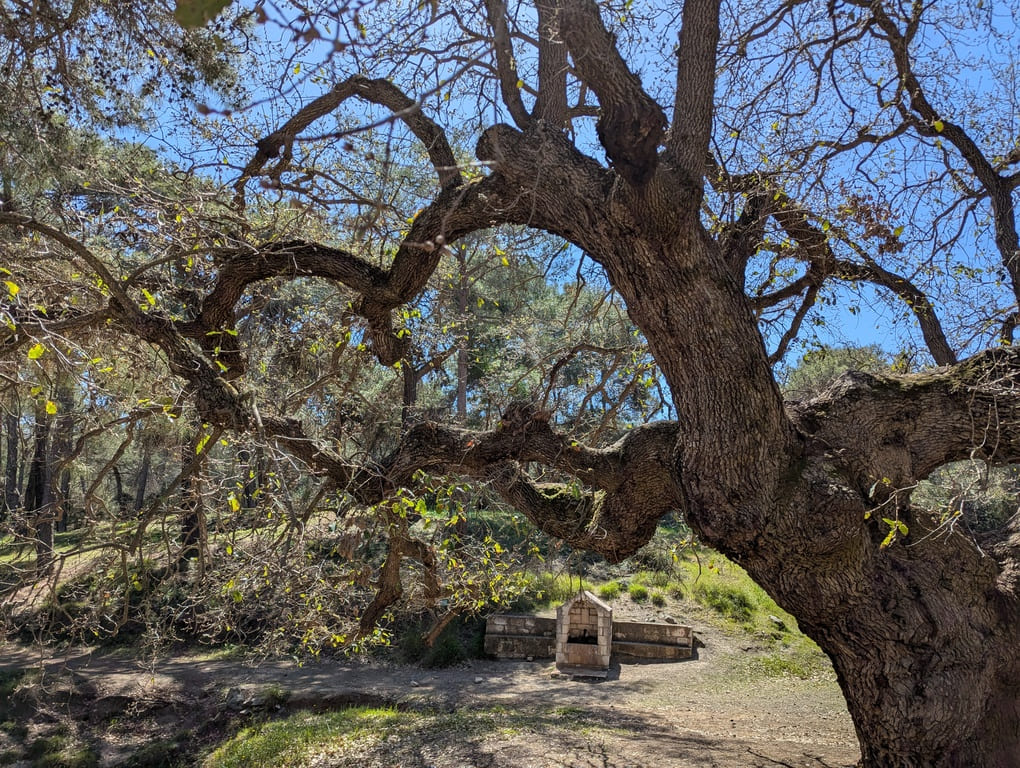
Along the route, the guide stopped us to point out an old oak tree, which has apparently stood for 800 years. You can’t fail to spot it, wilted over but still standing strong, it’s incredible to think it has been here through the medieval times, the renaissance, industrial, Victorian and into the modern era.
Behind the tree was also a little stream, flowing from water fountains, but our guide mentioned this isn’t drinking water, so don’t get tempted to fill up your bottle.
You’ll also see ruins of Pyrgos Tis Rigainas, also called the ‘Queen’s Tower’.
How Long Is The Aphrodite Trail?
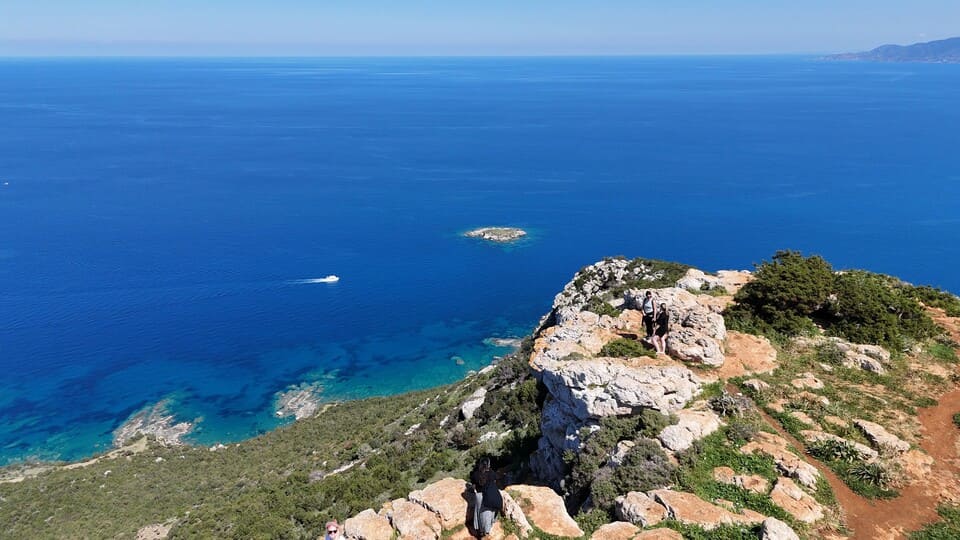
The length of the trail is 7.5km (about 4.6 miles), which isn’t too long compared to what I’m used to, but it’s virtually all up and down hill, therefore you’ll definitely increase your heart rate.
In total, it took us around 3.5 hours, but 30 minutes was spent at the top taking photos, therefore you could cut this down to 2-3 hours if you’re prompt. We’re a group of bloggers, we’re always going to take a bit longer!
Circular Vs Back On Yourself
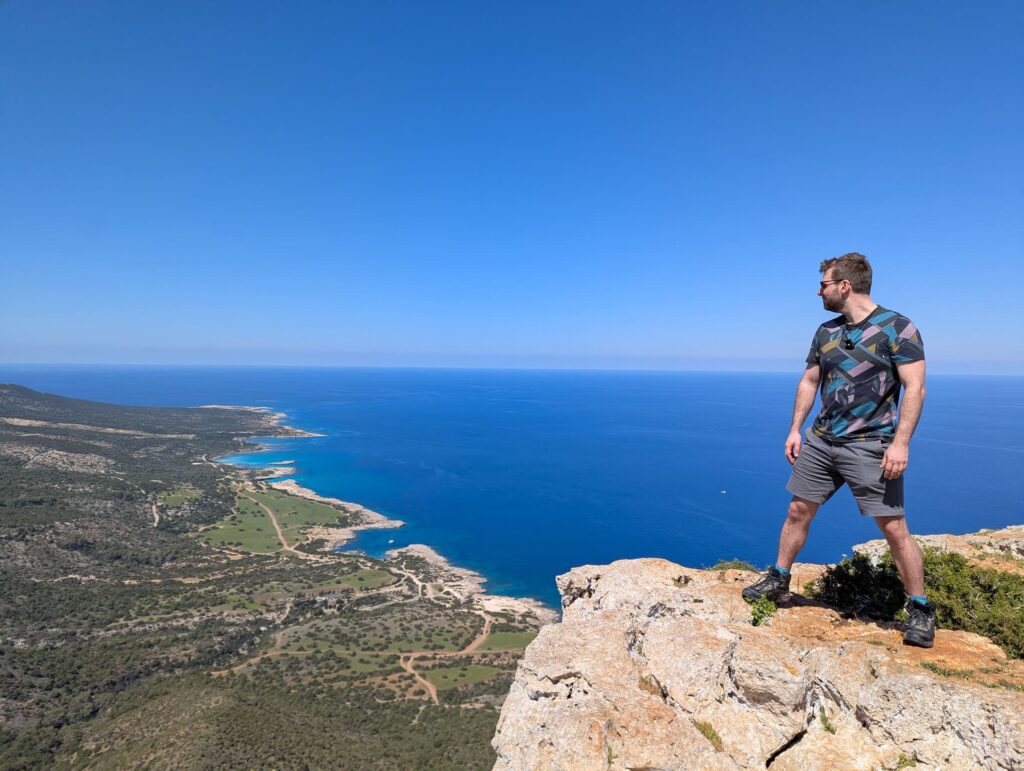
I tend to opt for circular routes as it means you get a different view on the second half, keeping it interesting. The Aphrodite and Adonis trail is a circular route, involving you walking back down the hill on the other side.
We saw a large number of goats as we headed down the hill, while we heard them bleating to their young.
How Hard Is The Walk?

I have been told two different scores, our guide mentioned it’s a 3 out of 3, while online I’ve seen it’s a 2 out of 3. Personally, I didn’t find it too hard, 7.5km is relatively short compared to my usual, but the slightly steep climb does mean you’ll feel it a bit on the way up.
I’ll also say that we came in March, when the weather was about 19c, yet it felt more like 25c. Therefore, if you came in the summer time, the heat would be immense. Either way, you want to get the walk done first thing in the morning, before the midday heat.
Descending the Hill
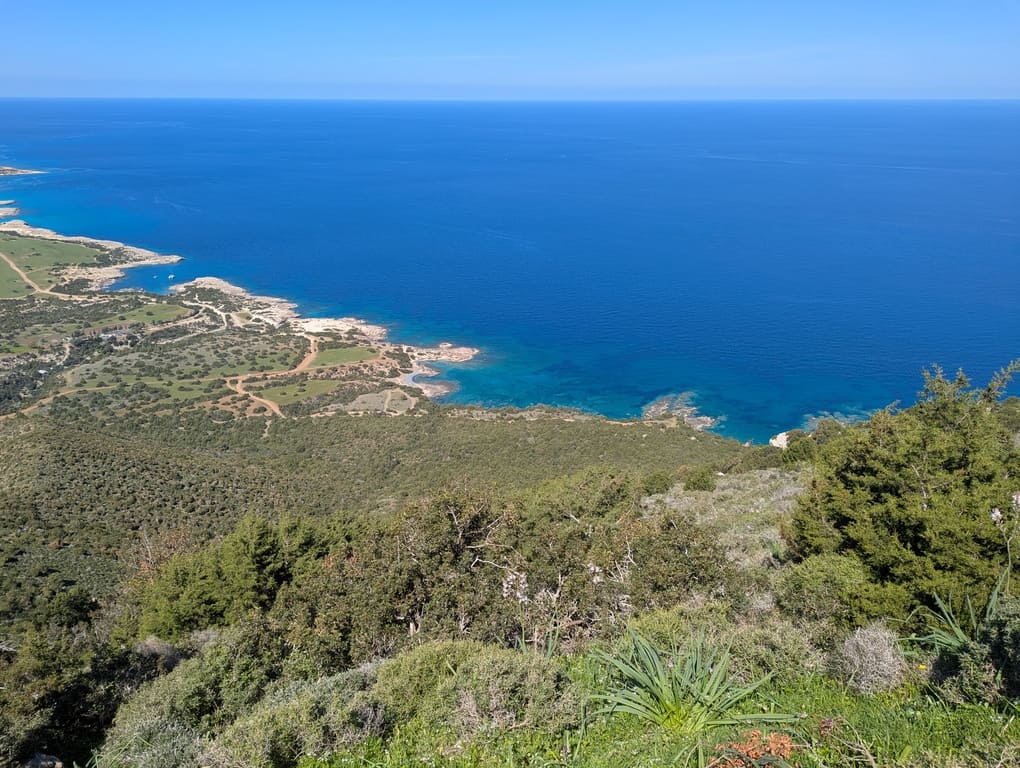
This is a common subject once I’ve completed a hike, as people often want to know how intense it is on the way down. With the route we took, it was quite easy going down, it wasn’t too sharp, zigzagging downwards.
We easily walked side by side so plenty of room. I also have a massive fear of heights and never once felt ‘near the edge’ or anything of that nature, so it felt completely safe.
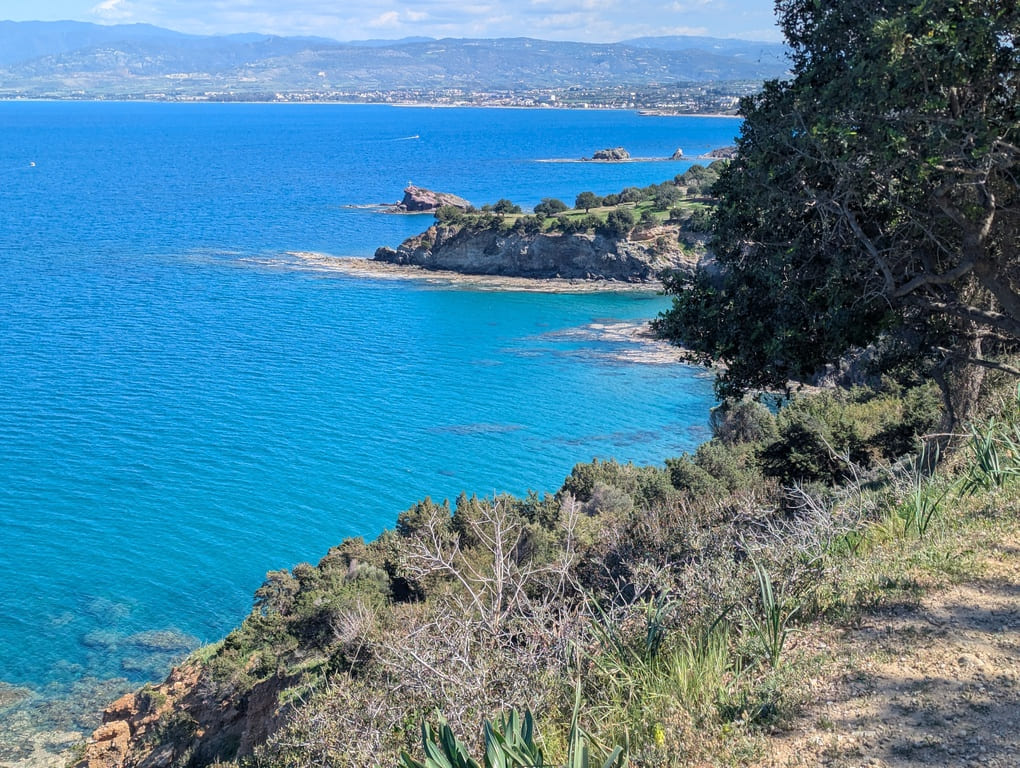
There are the occasional loose rocks that you could step on, so you do have to concentrate, which is hard as we ended up chatting to each other.
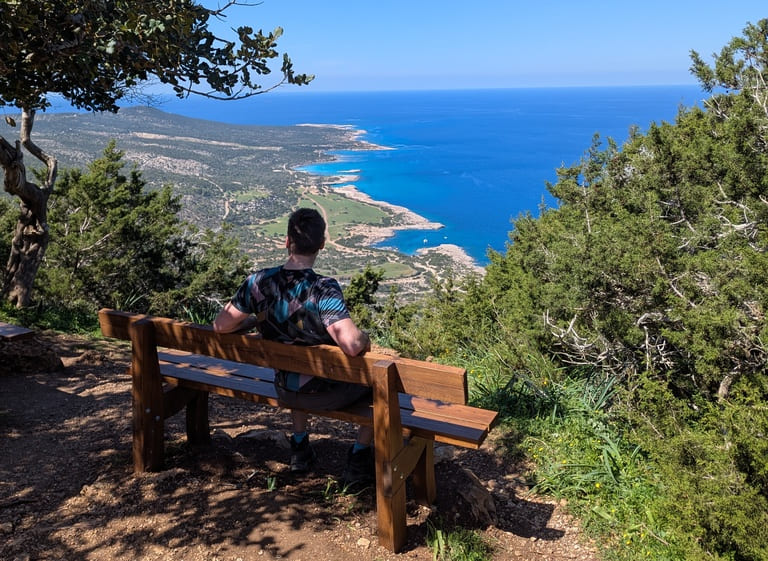
There was also a couple of benches on the way down which faced outwards towards the beautiful views, ideal if you want to catch your breath and take it all in.
What To Pack
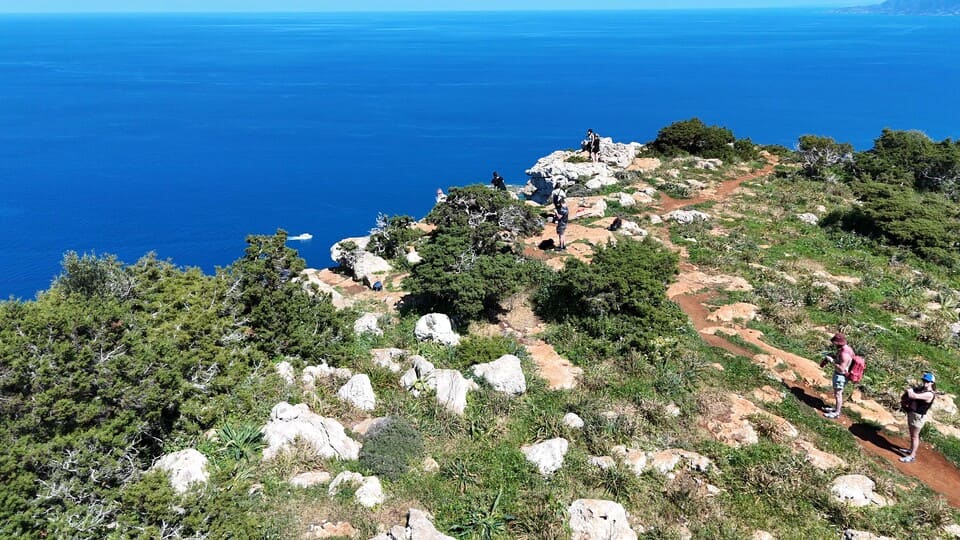
Firstly, you need plenty of water. Everyone got through their bottle of water way before the end, while I actually brought a bigger bottle with me, which I just about finished by the end.
You should bring sturdy hiking shoes. You most likely won’t be stepping through mud or anything too rugged, but you want comfortable, strong shoes that are built for long walks, with a decent grip at the bottom. Of course, most trainers are fine, providing the bottom part still has a decent amount of grip, I wouldn’t wear worn out trainers on this route.
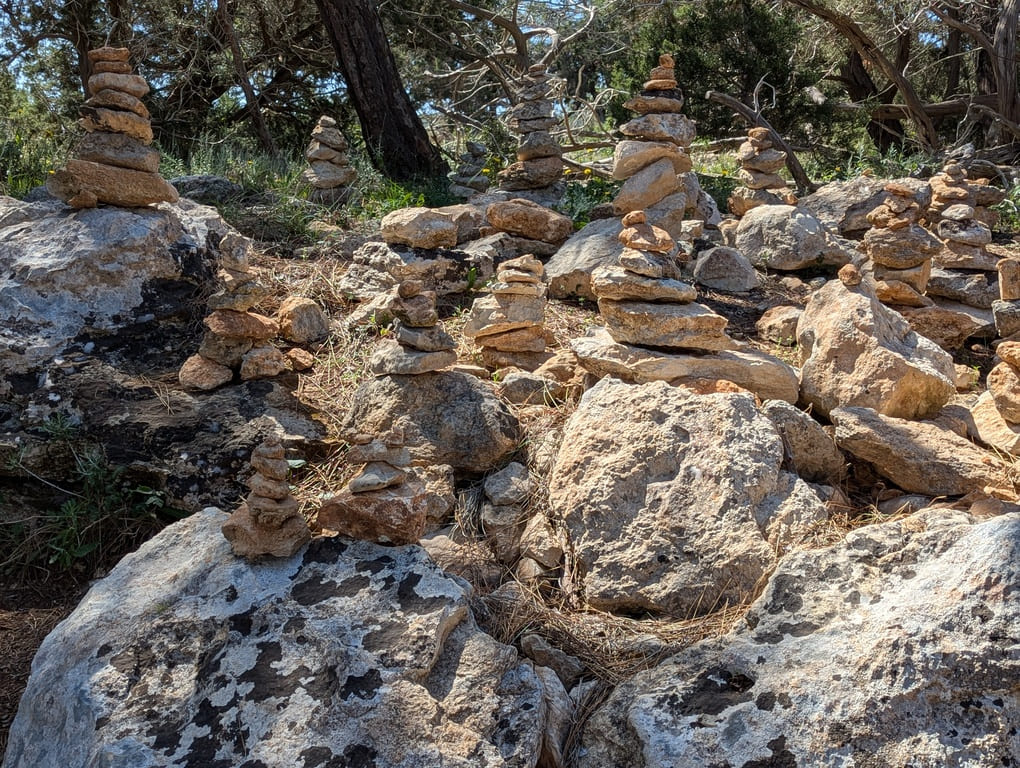
PLEASE remember sun tan lotion, I forgot it and caught the sun a bit. It doesn’t matter what time you go, it’s always warm and sunny here, so you have to be prepared.
You should also pack some snacks, we were so hungry by the end, but I had some protein bars in the pockets in case I couldn’t hold until lunch.
Who Is The Walk Ideal For?
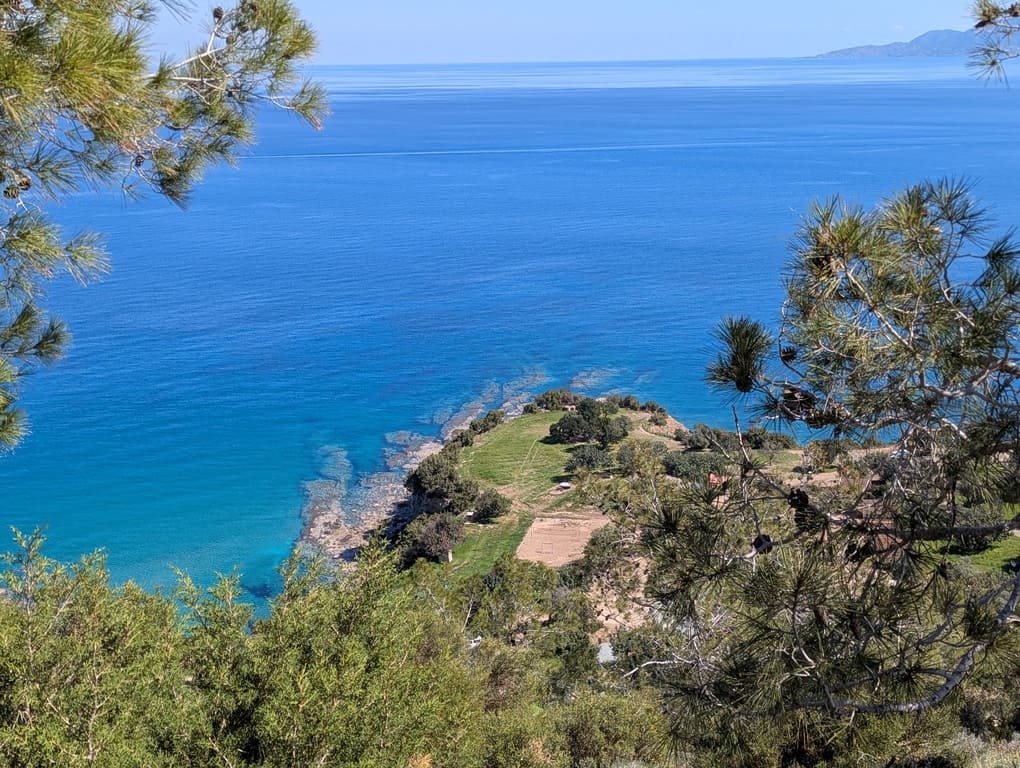
We predominantly saw couples in their thirties, forties and fifties on the hike, but realistically it should be fine for all, providing it hasn’t rained recently (what are the chances of that).
Many people book during the spring and autumn time for their luxury holidays, as they can hike and trek through the hills and mountains without the summer heat burning down.
But it wasn’t just couples, we actually saw a few families taking on the hike, with relatively young children (I’m bad at kid ages…I’m going to say 10-14), therefore it can work for family holidays as well.
If you’re curious about other activities to try, you should check out my Pathos travel guide, where I detail the best restaurants, hotels and experiences.
The Conservation Actions for Threatened Mediterranean Island Flora

I saw a sign near the entry detailing some information around the conservation of the flora, which I thought was worth sharing.
The aim of the project is for the conservation of threatened plants of the flora of the Mediterranean islands. The conservation actions in Cyprus focus on rare plant species of the island, some of which are threatened by extinction.
The conservation actions include:
- Seed collection for 60 threatened and endemic species from 100 locations (shown on the map connected to the sign) and storage in gene banks
- Population reinforcement
- Translocation of species to new locations
- Reintroduction to locations where the species have become extinct
- Control of competing vegetation and alien invasive species
- Establishment of restriction barriers to control access to motorised vehicles
The project actually took place almost a decade ago, but they’re now monitoring the conservation actions to ensure its success.